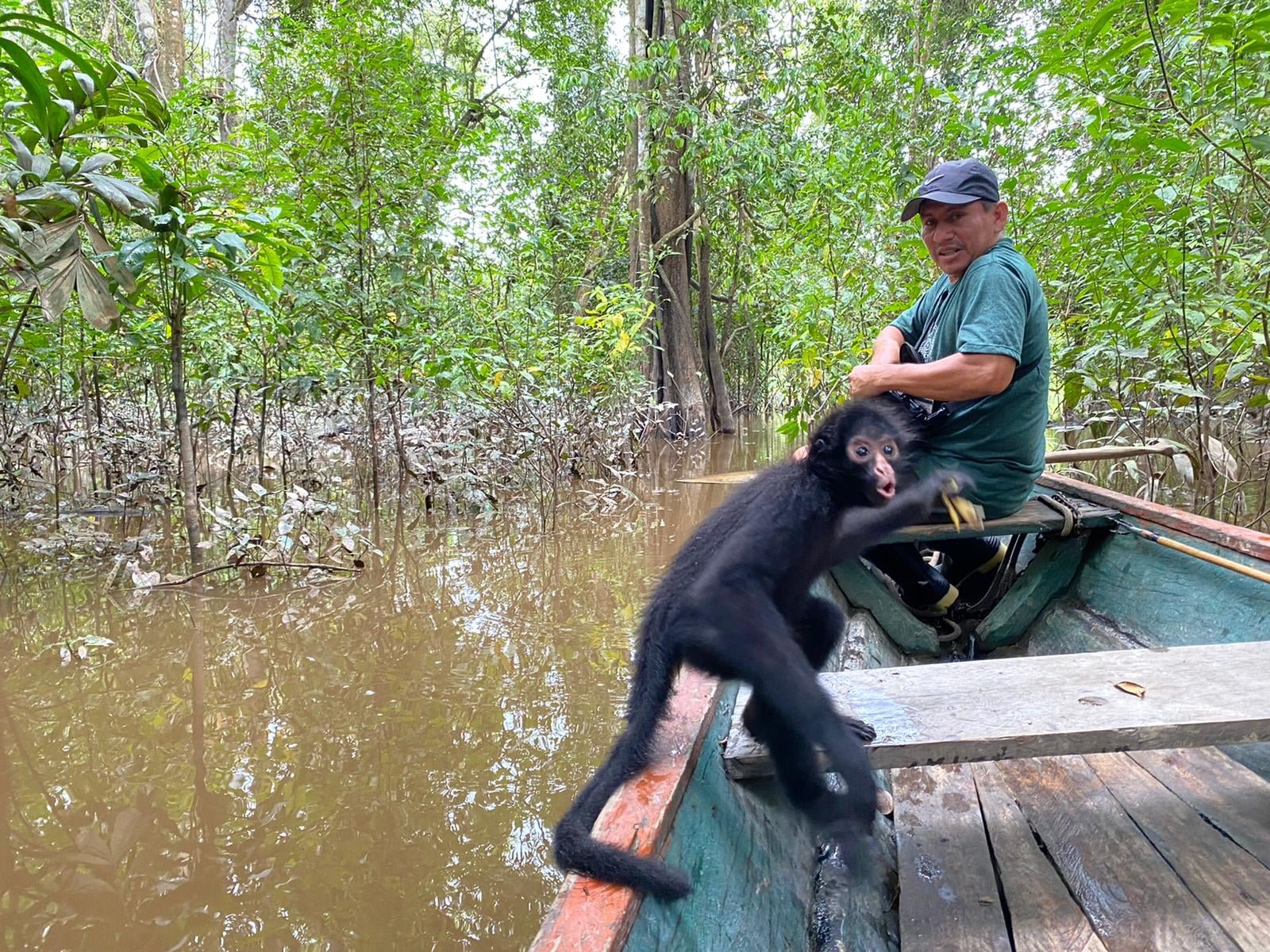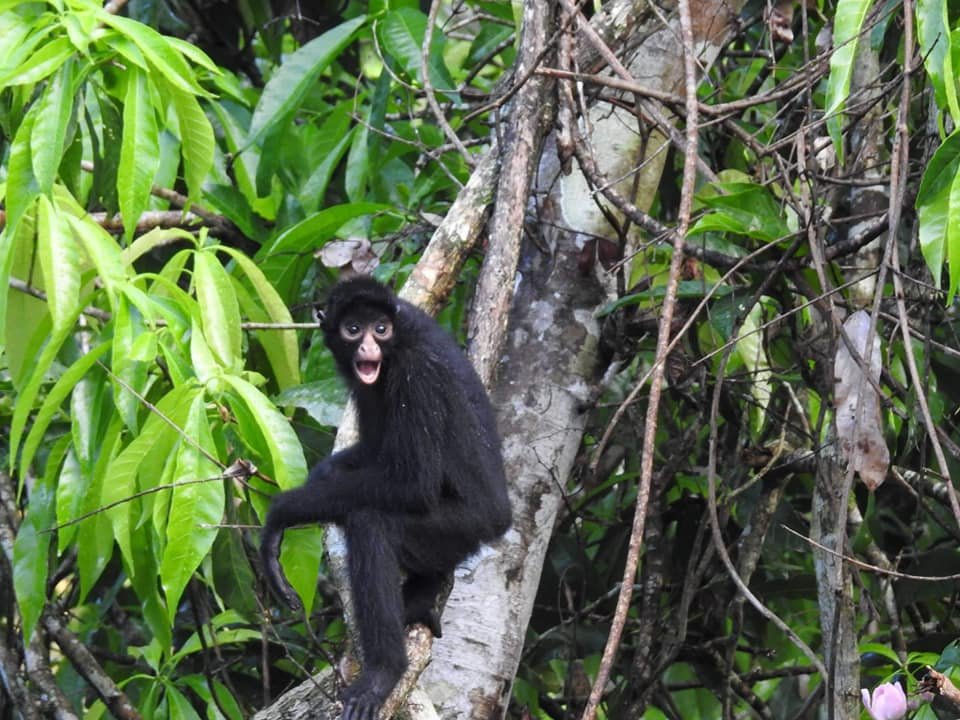spider monkeys
Spider monkeys are new world monkeys, meaning they have very little to no thumbs, on the contrary, old world monkeys have opposable thumbs. They also spend their time in the trees opposed to old work monkeys that spend most of their time on the ground. They can have fur that is golden, red, brown or black, although their hands are typically black. Their faces are usually hairless, but some species have flesh-colored rings around their eyes. Spider monkeys are only about 14-26 inches in body length and can weigh anywhere 13 to 24 pounds. They have extremely long arms and legs, giving them a lanky appearance. Their hands are narrow with long, curved fingers and reduced or non-existent thumbs. Their tails are exceptionally long and can be used to grasp objects or swing from branches. They have a special friction pad at the tip of their tails that helps with grip. Spider monkeys are highly adapted to arboreal life, meaning they spend majority of the times swinging through the high canopy of the trees.
Spider monkeys are found in vast areas of the Americas, including Mexico, Guatemala, Honduras,Belize, El Salvador, Coast Rica, Panama, Columbia, Ecuador, Peru, Brazil and Bolivia. They thrive in mature, pristine tropical rainforests, but can also adapt to less pristine environments. For example, cloud forests, tall evergreen forests and lowland tropical forests.
Spider monkeys are diurnal, meaning they are active during the day. They spend their time high up in the limbs of the rainforest canopy, foraging, feeding and traveling. Spider monkeys are social animals. They exhibit fission-fusion, meaning they live in large groups, called “troops”, that break off into smaller foraging parties during the day and then merge back together in the evening. They communicate with various vocalizations, gestures, and facial expressions. They are known for their loud calls, screeches, and barks , which they use to communicate with each other and warn of threats. While grooming is a common primate social behavior, spider monkeys do not frequently groom each other due to their lack of thumbs, which makes grooming difficult.
Male spider monkeys have a hierarchy, and dominant males may be more prone to aggression. While primarily friendly with their troop, the males can exhibit aggressive behaviors towards rivals, including screaming tossing feces and shaking branches. However, within the troop embraces are frequent, especially during fusions between subgroups and approaches to mothers of young infants. They use them as a a conflict management mechanism. Spider monkeys also engage in social play, with acrobatics, cuddling and rough and tumble play being common.
When the troop breaks off into two to forage, they search for a wide variety of things. Spider monkeys are primarily frugivores, meaning their diet consists mainly of ripe fruits, however they also eat leaves, nuts and seeds, as well as spiders and insects
Spider monkeys in the wild face threats from large cats like jaguars, pumas and ocelots. As well as large snakes and eagles. Spider monkeys are also susceptible to diseases like, malaria carried by insects that are consumed in their habitat. Despite their agility and arboreal lifestyle, spider monkeys are facing increasing pressure from both natural predators and human activities, making them vulnerable to extinction.



